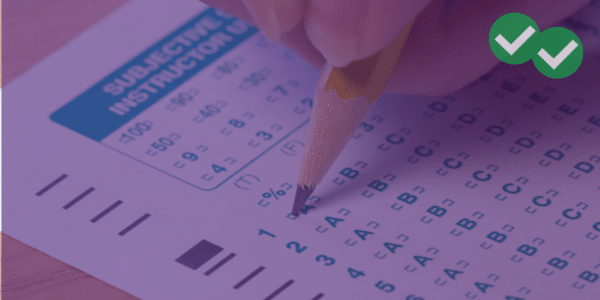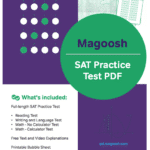Are you wondering whether taking an ACT diagnostic test is worth your time? It definitely is! Not only will a good quiz help you identify your strengths and weaknesses, but it’ll also give you an understanding of the question types you’ll see on test day. Overall, it’s a low-pressure way to build familiarity with the materials while getting a sense of where you are. So whether you’re excited to dive in or worried about taking the exam, our advice is the same: take a free ACT diagnostic test!

First, Start with a Quick Quiz
If the idea of taking a full practice ACT sounds intimidating to you, there is a quick and less scary way of getting a sense of how you might do on the ACT: Magoosh’s Free ACT Diagnostic Test.
In fact, if you have 10 to 20 minutes to spare, you should take this quiz right now!

Quiz Starts Here:
This quiz has one page for each ACT test (4 total): English, math, reading & science. Each section has 3 questions: 1 easy, 1 medium & 1 hard (in that order).
This quiz will take about 10-20 minutes to complete, so grab some scratch paper and a calculator, and do your best!
Wait, Wait, Wait. What Is an ACT Diagnostic Test, Anyway?
An ACT diagnostic test is a sample quiz or exam that you take to figure out your strengths and weaknesses on the ACT. You can take it at the beginning of your studies to figure out how to focus your schedule, or you can take it later on, to “diagnose” any issues you may be having. In either case, it’s a valuable tool for figuring out which sections, topics, or question types may need work before you take the official exam.
You can use a tool like the free ACT diagnostic test above to get a quick overview of where you currently stand–or, you can try a full-length ACT practice test to get a more in-depth picture. Our recommendation? Take the free ACT diagnostic test first (it doesn’t take long!), then dive into the full-length test when you have several hours free to take a closer look at how you’re approaching the exam.
Your ACT Diagnostic Test Results
So you took the quiz–awesome! What now?
If your ACT diagnostic test results reflect where you want to be on the ACT, great job! We still recommend that you take a full-length, free ACT diagnostic test because it’s really hard for a diagnostic quiz of 12 questions to reflect how you would actually do on a 75-question test. But now you can go into a diagnostic test with a nice boost to your confidence!
If your results don’t match your expectations, don’t be disheartened! Remember that it is definitely absolutely 100% possible to boost your score before the official exam. Plus, you just got some really valuable information! You could choose to take a diagnostic next or you might find it more useful to brush up on your weak areas first as determined by this diagnostic quiz before going into the full-length practice test.
How to Take a Full-Length Practice Test
First of all, make sure you get a great practice test to work with. You can find Magoosh’s full-length ACT practice test here!
- Set aside a solid block of time. We’re talking 3-4 hours, and more if you get extended time (usually 1.5 x traditional timing, but this can vary).
- Make sure that you’ll be undisturbed. Put a sign on your door if you have to, or go to the library. Silence is golden for the practice test (and on test day)
- Gather your materials. Here’s a great list for test day, and these are good things to keep with you during practice, as well.
- Sit down with the test. You can get official practice from the ACT—and, of course, stellar materials from Magoosh. This is great especially if you want to take several practice tests, so you can track your scores.
- Go for it! If you can, take the mandatory breaks as well, so you get a feel for what it’s like to take a test for this long.
The Point of It All
After you’ve finished up, score your free ACT diagnostic test. But don’t just look at the score—that’s maybe 10% or less of the point of taking a diagnostic!
You now hold in your hands the key to your ACT approach. Go over the questions you got right. When were you guessing? When were you unsure but correct? Go over the questions you got wrong. Did you bubble in the wrong answer choice by mistake? Common rookie error. Now you won’t do that on test day!
Now you know where your strengths are—these are the questions you’ll approach first on test day. You also know where your weaknesses are—this is what you’ll study over the coming days or weeks before test day. Sign up for a free 7-day trial of Magoosh ACT prep to get access to over 250 lesson videos, 1500 practice questions, and full-length practice tests to make the most out of your diagnostic results!





Leave a Reply